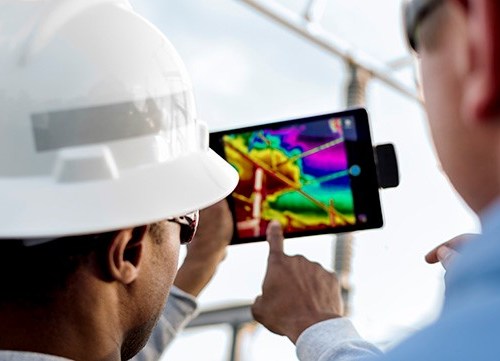Top 3 Questions About Microgrids
Microgrids have made many technological gains over the past decade. New sources of energy from solar to wind, generators and batteries have all changed the structure and future potential of microgrids. Read more about what’s changed and the options available.

In the past several years, the Duke Emerging Technology Office has developed, installed, commissioned and operated two microgrids in the Charlotte, N.C., area with the objective of trying to understand and tackle the engineering issues and distributed intelligence platform capabilities associated with microgrids.
In recent years, microgrids have emerged as a promising new tool in the energy industry. Advances in technology over the last decade have enabled the creation of microgrid test beds, with solar farms, diesel or natural gas generators and batteries for energy storage powering these microgrid systems.
The need for microgrids has evolved over time. Traditionally, remote or off-grid microgrids were most commonly used for island topographies that lacked nearby affordable utility grid infrastructure. These remote microgrid operators are either upgrading their Distributed Energy Resources (DER) mix to more economic and environmentally friendly renewables and energy storage, or are considering the possibility of expanding their connections to other nearby circuit segments as part of a networked or nested microgrid. Recently, there has been a significant number of grid-connected microgrids deployed at universities, hospitals, fire stations, commercial and industrial sites. Even utilities use microgrids for a wide variety of use cases, which include resiliency, sustainability goal attainment, and grid services, depending on the incentives or regulatory jurisdiction. In the future, as new business models and multiple value streams are realized, coupled with the scale of battery energy storage systems deployed, networked microgrids will likely complement each unique grid-connected microgrid or DER within communities, smart cities or even an advanced utility distribution system.
Remote microgrid solutions have been commercially available for years for powering island operations in distant and hard-to-reach geographic locations. Most of those existing off-grid microgrids heavily rely on a rotating mass distributed generator, utilizing diesel or natural gas. Remote microgrids with battery energy storage and renewables, such as wind and solar, are gaining traction due to their cost competitiveness and technological maturity. Grid-connected microgrids are earlier on the maturity curve with many of the early adopters being more technological, risk tolerant and sustainable. In many cases, these users are leveraging government subsidies for a favorable return on investment. Though many of these grid-connected microgrids are leveraging battery energy storage, very few of the installations have been able to offer multiple grid services back to the utility or seamlessly island the microgrid without requiring a black start. A black start is when power is restored to an electric power station or a part of an electric grid without requiring the entire external power transmission network to recover. Additionally, the resynchronization process at most of these sites is long and unpredictable before it can reconnect back to the utility grid, which could pose a potential reliability concern for high DER penetration circuit segments. Lastly, with the wide variety of grid-connected microgrid customers, the energy management system vendor landscape is still evolving in terms of control functionality and economies of scale.
Networked microgrids are still in their infancy and are predominantly research-based, with a few projects being explored by universities or national laboratories in simulated environments.
Give the vast geographic footprint of these microgrids and scalability limitations, there have been very few high-fidelity nested power systems that have been validated in a closed-loop situation with moderate to high DERs. Additionally, the business models for networked microgrids are complex and require multiple use cases and stacked benefits on both sides of the utility meter to be economically feasible. Models that require extracting both utility and customer value present challenges to utility stakeholders and the municipalities investigating the economic feasibility of smart cities or community microgrids.
Additionally, the regulatory environment is anticipated to evolve. A possible shift to a distribution system operator (DSO) model may enable new value streams to be derived from the implementation of grid-connected and networked microgrids. We are still early in the evolution of microgrids and in the integration of grid-connected DERs.
3. Is this hype or does it offer real value?
Microgrids, when comprised of interoperable assets, can deliver cost savings and flexibility, and can leverage existing infrastructure based on the use case and even a mix of customer and utility assets. Additionally, when incorporating modular and standardized approaches for design, integration and operation, a more efficient and repeatable microgrid solution can be offered as a product or service.
Grid-connected and networked microgrids have the potential to provide real value to utilities and their customers. Extracting this value will require changes to both traditional utility business model analysis and the regulatory review and approval process. This is starting to happen in the industry, such as in Hawaii,1 where regulators are proposing new incentives to accelerate investments in DERs and microgrids.
In summary, many specific cases offer value today, and it is anticipated more value can be derived as regulatory processes further progress and designs become more advanced and standardized.
1 https://puc.hawaii.gov/energy/pbr/
This article was written by Dr. Stuart Laval.
Dr. Laval is a member of Duke Energy’s Emerging Technology Office, where he leads the development of grid-edge operational technologies and pioneering utility interoperability standards. He currently serves as the co-chairman of the Open Field Message Bus (OpenFMB) task forces at the UCA International Users Group (UCAIug) and North American Energy Standards Board (NAESB). Dr. Laval has more than 15 years of experience in the development of over 30 technology solutions in electric utility power systems, telecommunications and power electronics. He holds a bachelor’s degree and master’s degree in electrical engineering and computer science from MIT, an MBA from Rollins College, and a Ph.D. in industrial engineering from the University of Central Florida.



